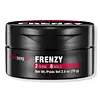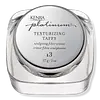What's inside
What's inside
 Benefits
Benefits

 Concerns
Concerns

 Ingredients Side-by-side
Ingredients Side-by-side

Water
Skin ConditioningPetrolatum
EmollientCetearyl Alcohol
EmollientBis-Diglyceryl Polyacyladipate-2
EmollientCopernicia Cerifera Wax
Pvp
Emulsion StabilisingLanolin Wax
EmollientGlycerin
HumectantVp/Va Copolymer
Ceteareth-25
CleansingOzokerite
Emulsion StabilisingParaffinum Liquidum
EmollientPropylene Glycol
HumectantDiethylhexyl Malate
EmollientPEG-40 Castor Oil
EmulsifyingPEG/PPG-18/18 Dimethicone
EmulsifyingSd Alcohol 40-B
AstringentSucrose
HumectantCereus Grandiflorus Flower Extract
Skin ConditioningParfum
MaskingMethylparaben
PreservativePropylparaben
PreservativePhenoxyethanol
PreservativeCitronellol
PerfumingBenzyl Salicylate
PerfumingAlpha-Isomethyl Ionone
PerfumingHexyl Cinnamal
PerfumingButylphenyl Methylpropional
PerfumingLimonene
PerfumingLinalool
PerfumingAmyl Cinnamal
PerfumingHydroxyisohexyl 3-Cyclohexene Carboxaldehyde
MaskingCI 77891
Cosmetic ColorantMica
Cosmetic ColorantCI 60725
Cosmetic ColorantCI 17200
Cosmetic ColorantWater, Petrolatum, Cetearyl Alcohol, Bis-Diglyceryl Polyacyladipate-2, Copernicia Cerifera Wax, Pvp, Lanolin Wax, Glycerin, Vp/Va Copolymer, Ceteareth-25, Ozokerite, Paraffinum Liquidum, Propylene Glycol, Diethylhexyl Malate, PEG-40 Castor Oil, PEG/PPG-18/18 Dimethicone, Sd Alcohol 40-B, Sucrose, Cereus Grandiflorus Flower Extract, Parfum, Methylparaben, Propylparaben, Phenoxyethanol, Citronellol, Benzyl Salicylate, Alpha-Isomethyl Ionone, Hexyl Cinnamal, Butylphenyl Methylpropional, Limonene, Linalool, Amyl Cinnamal, Hydroxyisohexyl 3-Cyclohexene Carboxaldehyde, CI 77891, Mica, CI 60725, CI 17200
Water
Skin ConditioningPropylene Glycol
HumectantOzokerite
Emulsion StabilisingCaprylic/Capric Triglyceride
MaskingOleth-20
CleansingOleth-3
EmulsifyingOleth-5
EmulsifyingIsopropyl Myristate
EmollientOleth-10 Phosphate
Oleth-3 Phosphate
PEG-150 Pentaerythrityl Tetrastearate
EmulsifyingTriethanolamine
BufferingVp/Va Copolymer
PEG-45m
HumectantBenzophenone-4
UV AbsorberCI 60730
Cosmetic ColorantGlycerin
HumectantDimethicone
EmollientMicrocrystalline Wax
Emulsion StabilisingPhenyl Trimethicone
Skin ConditioningDiazolidinyl Urea
PreservativeCopernicia Cerifera Wax
Pvp
Emulsion StabilisingPropylparaben
PreservativeMethylparaben
PreservativeParfum
MaskingPEG-6 Caprylic/Capric Glycerides
EmulsifyingWater, Propylene Glycol, Ozokerite, Caprylic/Capric Triglyceride, Oleth-20, Oleth-3, Oleth-5, Isopropyl Myristate, Oleth-10 Phosphate, Oleth-3 Phosphate, PEG-150 Pentaerythrityl Tetrastearate, Triethanolamine, Vp/Va Copolymer, PEG-45m, Benzophenone-4, CI 60730, Glycerin, Dimethicone, Microcrystalline Wax, Phenyl Trimethicone, Diazolidinyl Urea, Copernicia Cerifera Wax, Pvp, Propylparaben, Methylparaben, Parfum, PEG-6 Caprylic/Capric Glycerides
Ingredients Explained
These ingredients are found in both products.
Ingredients higher up in an ingredient list are typically present in a larger amount.
Copernicia Cerifera Wax comes from a palm tree native to Brazil; another name for this ingredient is Carnauba Wax.
This ingredient is used to thicken texture and also leaves behind a film when applied.
Fun fact: This wax has the highest melting point of all natural waxes and low solubility.
Learn more about Copernicia Cerifera WaxGlycerin is already naturally found in your skin. It helps moisturize and protect your skin.
A study from 2016 found glycerin to be more effective as a humectant than AHAs and hyaluronic acid.
As a humectant, it helps the skin stay hydrated by pulling moisture to your skin. The low molecular weight of glycerin allows it to pull moisture into the deeper layers of your skin.
Hydrated skin improves your skin barrier; Your skin barrier helps protect against irritants and bacteria.
Glycerin has also been found to have antimicrobial and antiviral properties. Due to these properties, glycerin is often used in wound and burn treatments.
In cosmetics, glycerin is usually derived from plants such as soybean or palm. However, it can also be sourced from animals, such as tallow or animal fat.
This ingredient is organic, colorless, odorless, and non-toxic.
Glycerin is the name for this ingredient in American English. British English uses Glycerol/Glycerine.
Learn more about GlycerinMethylparaben is a preservative and is a paraben. It is used to prevent the growth of fungus, mold, and other harmful bacteria. Parabens are chemicals used as preservatives in both cosmetics and food.
Methylparaben can be synthetically created. It can also be found naturally in some fruits, such as blueberries.
Oftentimes, Methylparaben is combined with other parabens to help increase the shelf life.
The safety of Methylparaben is currently being studied. While ongoing studies are looking into the safety of parabens, the results have been very mixed. Some studies have not found Methylparaben to be harmful.
Learn more about MethylparabenOzokerite is a naturally occuring mineral wax. In cosmetics, ozokerite is used as a texture enhancer.
Ceresin wax is derived from this ingredient.
The melting point of ozokerite is 58-100 C.
Ozokerite is found all over the world including Scotland, the US, and India.
Learn more about OzokeriteParfum is a catch-all term for an ingredient or more that is used to give a scent to products.
Also called "fragrance", this ingredient can be a blend of hundreds of chemicals or plant oils. This means every product with "fragrance" or "parfum" in the ingredients list is a different mixture.
For instance, Habanolide is a proprietary trade name for a specific aroma chemical. When used as a fragrance ingredient in cosmetics, most aroma chemicals fall under the broad labeling category of “FRAGRANCE” or “PARFUM” according to EU and US regulations.
The term 'parfum' or 'fragrance' is not regulated in many countries. In many cases, it is up to the brand to define this term.
For instance, many brands choose to label themselves as "fragrance-free" because they are not using synthetic fragrances. However, their products may still contain ingredients such as essential oils that are considered a fragrance by INCI standards.
One example is Calendula flower extract. Calendula is an essential oil that still imparts a scent or 'fragrance'.
Depending on the blend, the ingredients in the mixture can cause allergies and sensitivities on the skin. Some ingredients that are known EU allergens include linalool and citronellol.
Parfum can also be used to mask or cover an unpleasant scent.
The bottom line is: not all fragrances/parfum/ingredients are created equally. If you are worried about fragrances, we recommend taking a closer look at an ingredient. And of course, we always recommend speaking with a professional.
Learn more about ParfumPropylene Glycol is an odorless, colorless liquid. As a humectant, it helps skin retain moisture. It also aids in delivering active ingredients.
Another role of this ingredient is preventing a product from melting or freezing. Propylene glycol also adds antimicrobrial properties to a product, elongating product lifespan.
This ingredient is considered an organic alcohol and commonly added into both cosmetics and foods.
Those with sensitive skin or conditions may develop a rash when using this ingredient.
Learn more about Propylene GlycolPropylparaben is a preservative and is a paraben with antifungal and antimicrobial properties.
This ingredient can be naturally found in plants and insects, but most of it is synthetically manufactured for human use. In cosmetics, it is usually created by reacting para-aminobenzoic acid and propanol (an alcohol).
You can usually find this ingredient in water-based products.
Parabens have come under controversy due to the claim they are hormone disruptors. Studies show conflicting results. We recommend speaking with a professional if you have any concerns.
Propylparaben is commonly found in food, medicine, and cosmetics.
Learn more about PropylparabenPvp is a water-soluble synthetic polymer and common hairstyling ingredient. It is a film-forming ingredient and used to "hold" specific shapes of hair.
Pvp is less effective in high-humidity. It tends to draw moisture, but this moisture dismantles the structure and "hold".
We don't have a description for Vp/Va Copolymer yet.
Water. It's the most common cosmetic ingredient of all. You'll usually see it at the top of ingredient lists, meaning that it makes up the largest part of the product.
So why is it so popular? Water most often acts as a solvent - this means that it helps dissolve other ingredients into the formulation.
You'll also recognize water as that liquid we all need to stay alive. If you see this, drink a glass of water. Stay hydrated!
Learn more about Water